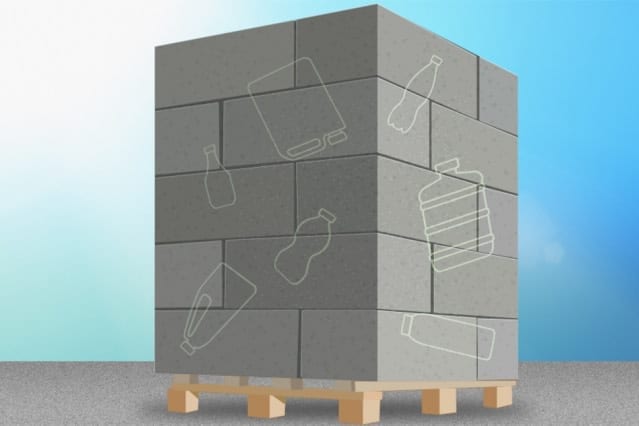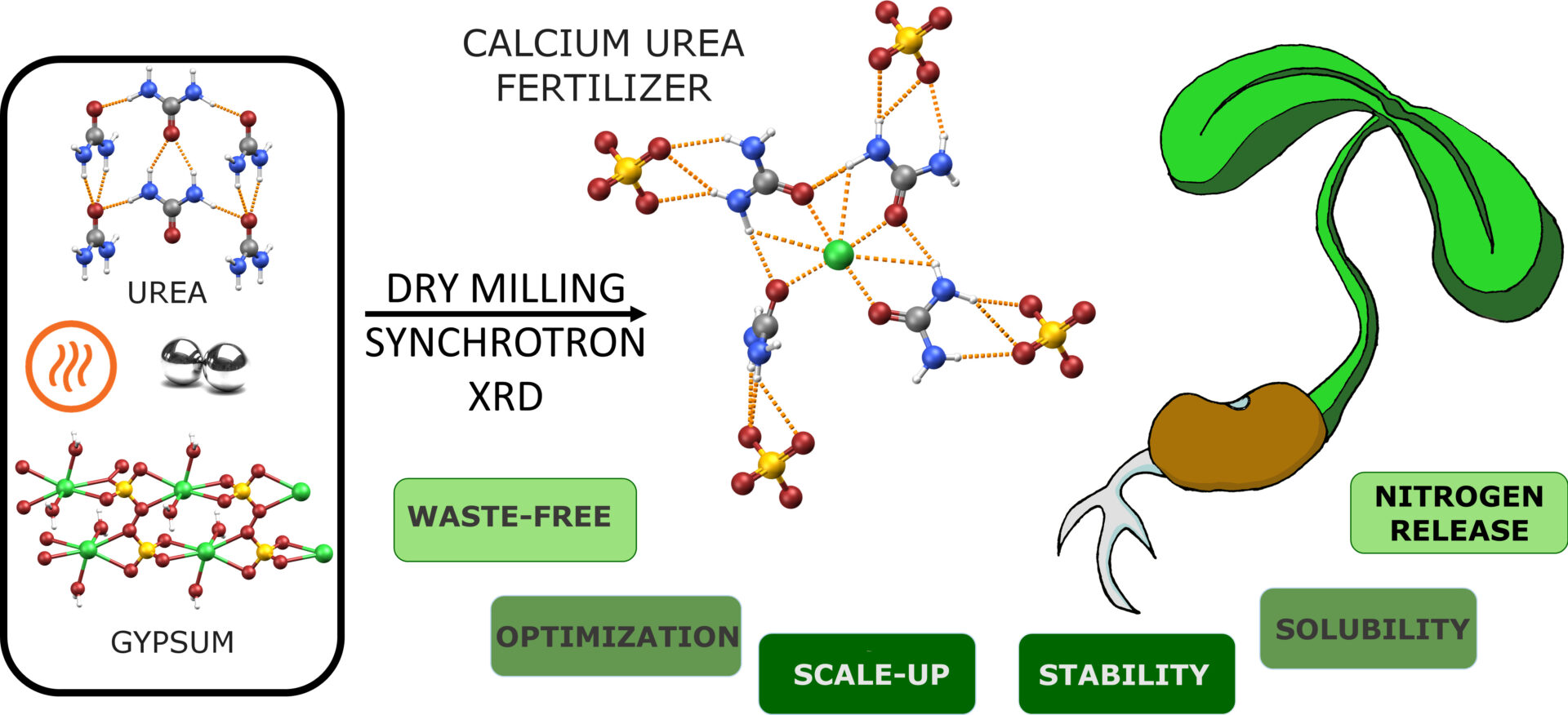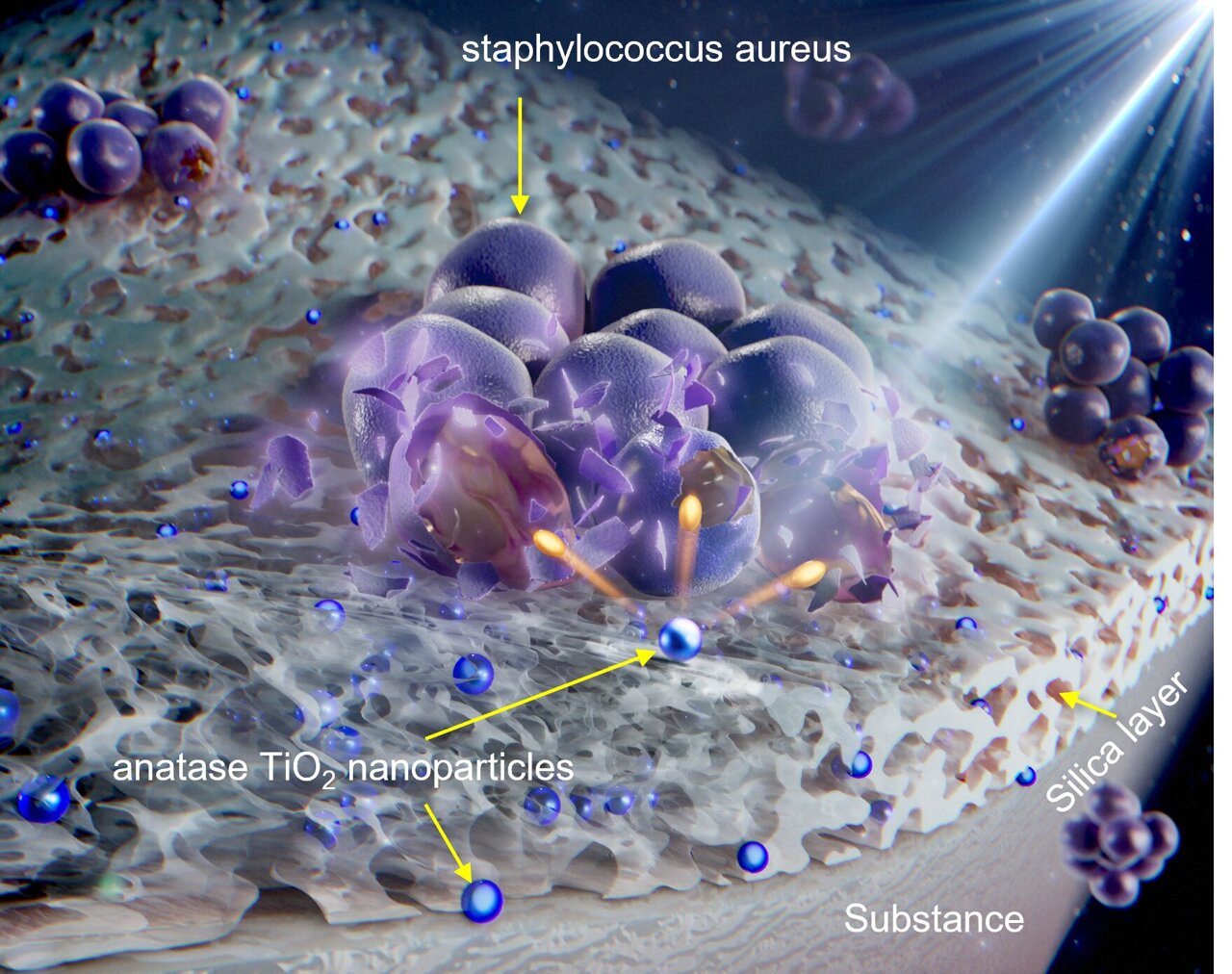
(from left to right) Dr Wu Shifan, Senior Research Fellow, Centre for Urban Solutions, School of Civil and Environmental Engineering, NTU and Professor Chu Jian, Chair of the School of Civil and Environmental Engineering, NTU holding up blocks of biocement made from urea and carbide sludge.
CREDIT: Credit to Nanyang Technological University, Singapore
Scientists from Nanyang Technological University, Singapore (NTU Singapore) have found a way to create biocement from waste, making the alternative to regular cement even greener and more sustainable.
Biocement is a renewable form of cement that typically uses bacteria to form a hardening reaction that binds soil into a solid block.
The NTU scientists have now managed to use two common waste materials, industrial carbide sludge and urea—from the urine of mammals—to create biocement.
They developed a process in which the reaction of urea with calcium ions in industrial carbide sludge forms a hard solid, or precipitate. When this reaction takes place in soil, the precipitate bonds soil particles together and fills the gaps between them, creating a compact mass of soil. This results in a strong, sturdy and less permeable block of biocement.
The research team, led by Professor Chu Jian, Chair of the School of Civil and Environmental Engineering, showed in a proof-of-concept research paper published in February 2022 in the Journal of Environmental Chemical Engineering that their biocement could potentially become a sustainable and cost-effective method for soil improvement, such as strengthening the ground for use in construction or excavation, controlling beach erosion, reducing dust or wind erosion in the desert, or building freshwater reservoirs on beaches or in the desert.
It can also be used as biogrout to seal cracks in rock for seepage control and even to touch up and repair monuments like rock carvings and statues.
“Biocement is a sustainable and renewable alternative to traditional cement and has great potential to be used for construction projects that require the ground to be treated,” said Prof Chu, who is also the Director of NTU’s Centre for Urban Solutions. “Our research makes biocement even more sustainable by using two types of waste material as its raw materials. In the long run, it will not only make it cheaper to manufacture biocement, but also reduce the cost involved for waste disposal.”
Original Article: NTU Singapore scientists create renewable biocement entirely out of waste material
More from: Nanyang Technological University
The Latest Updates from Bing News & Google News
Go deeper with Bing News on:
Biocement
- Feed has no items.
Go deeper with Google Headlines on:
Biocement
[google_news title=”” keyword=”biocement” num_posts=”5″ blurb_length=”0″ show_thumb=”left”]
Go deeper with Bing News on:
Renewable cement
- 13 Alert Traffic: Overturned concrete mixer affecting feeder along W. Sam Houston Toll Road at Clay
An overturned concrete mixer is blocking the West Sam Houston Toll Road at Clay Road exit in northwest Houston, and it's expected to be a while before it clears. The crash is on the feeder road. It ...
- Green Hydrogen in Transportation: Fueling the Clean Mobility Revolution
Green hydrogen is emerging as a clean fuel for transportation, promising to reduce emissions and revolutionize the energy sector.
- Webb County Commissioners Court offering Colonia Clean-Out Campaign
Although the Colonia Clean-Out Campaign kicked off on Monday, April 29, in Pueblo Nuevo, the drive continues Wednesday and Thursday for select colonias each day. According to the county, residents ...
- WA, feds upend plan to clean up one of nation’s most costly, dangerous radioactive sites
The Department of Energy and its regulators have released a revised path forward for DOE’s most costly liability in the nation — the 56 million gallons of radioactive waste stored in leak-prone ...
- How to Install Pavers Over a Concrete Patio
Renew an old concrete patio with decorative brick or concrete pavers. No need to tear out an ugly slab—just hide it!
Go deeper with Google Headlines on:
Renewable cement
[google_news title=”” keyword=”renewable cement” num_posts=”5″ blurb_length=”0″ show_thumb=”left”]










